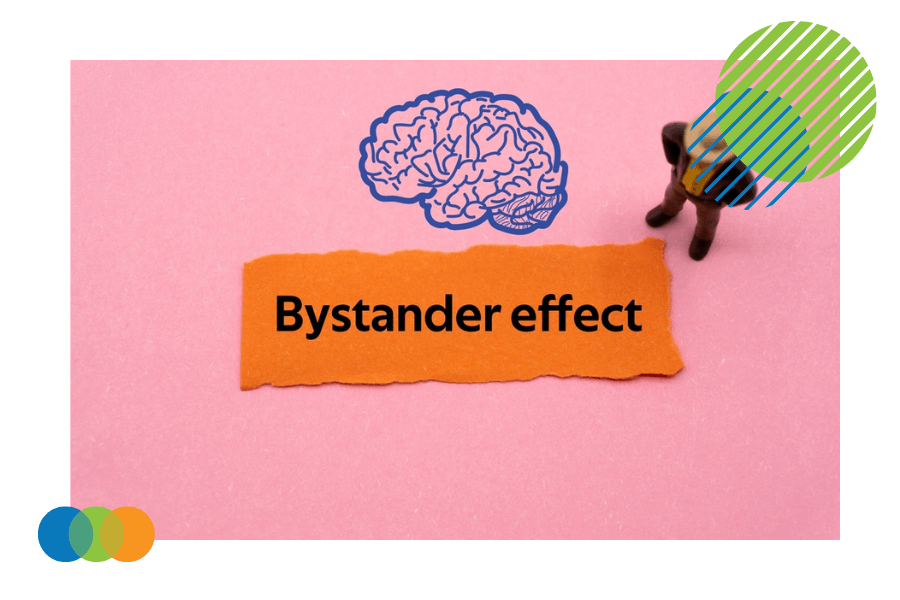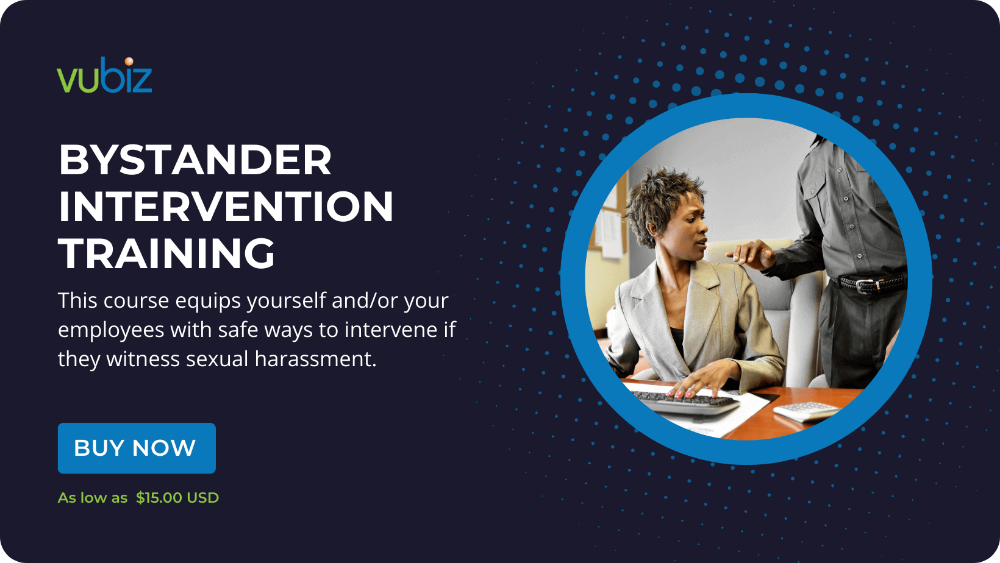 |
Written by Liz McDermott |

We all have the potential to be heroes in our own way. From small acts of kindness to heroic feats, there are countless opportunities to do good in the world. One of the most influential and impactful ways to make a difference is by taking action as a bystander during a difficult situation.
Proactively stepping in and taking action in situations where people are in danger, need help, or are mistreated helps protect vulnerable people and create a safer and more inclusive world.
Here are 5 steps to help unleash your inner hero and effectively intervene in situations as a concerned bystander.
What is Bystander Intervention?
Bystander intervention can take many forms, from a friend speaking up when someone is being mistreated to getting involved in physical sexual assault. It is important to remember that getting involved as a bystander is not about getting involved in every potentially dangerous situation but rather about taking action when it is safe and appropriate.
At its core, getting involved as a bystander creates a sense of collective responsibility and accountability. It is about understanding that we all have a role in creating a safer and more inclusive environment and can make a difference by taking action when necessary. By intervening in situations where people are in danger, we can help reduce the risk of harm and create an atmosphere of safety and respect.

Benefits of Bystander Intervention
Intervening as a bystander can positively impact individuals, groups, and communities. It can help reduce risk and increase respect for all, regardless of gender, race, ethnicity, or sexual orientation. By getting involved in situations where people are in danger, like preventing sexual assault, we can help protect the vulnerable and create a more welcoming and inclusive environment.
Direct intervention can also help reduce violence, sexual assault, harassment, and bullying in our communities. By getting involved in situations instead of allowing the bystander effect to make you a passive bystander, you can decide, remain calm, intervene directly, and provide assistance. In addition, you can help reduce trauma's impact and develop a sense of collective responsibility and accountability.
Finally, bystander intervention is an essential skill that fosters a sense of community and solidarity by creating an atmosphere of openness and support. Ensuring your own safety and those around you helps to strengthen our communities.

Barriers to Bystander Intervention
Several barriers can prevent people from getting involved in situations where people are at risk, the bystander effect being one of them. These barriers can include fear of personal harm, fear of retribution, feelings of powerlessness, and feelings of uncertainty about authority. In addition, there can also be cultural and societal norms that discourage being an active bystander.
It is important to remember that these barriers are only temporary and that we can all do our part to break them down and create a safer environment. By understanding the barriers and taking steps to overcome them, as well as the appropriate safety precautions, we can turn bad behavior during a problematic situation towards a targeted individual to bring tolerance and respect in our society.

Five Steps to Effective Bystander Intervention
#1. Be aware of your surroundings.
Pay attention to the behavior around you during an incident and be prepared to take direct action to create a safe environment for someone else.
#2. Assess the situation.
Are people in danger? Is someone else being mistreated or harassed? What's the risk? Is it safe to intervene? You can determine the best course of action by taking a moment to assess the situation.
#3. Take action.
If you feel comfortable and it is safe to do so, intervene. Speak up and let the person know that you are there to help. If intervening is unsafe, call for help or report the situation to the authorities.
#4. Support the victim.
Let the person know you are there to help and take action to ensure their safety. Offer your support.
#5. Follow up.
After getting involved, it is important to follow up with the victim to ensure they are safe and that the incident or situation has been resolved.
Tips for Implementing Bystander Intervention in Everyday Life
Being an active bystander is essential in creating a safer and more inclusive environment. Here are some tips to help you implement intervention as a bystander in your everyday life:
- Be aware of your surroundings.
Pay attention to what is happening around you and be prepared to intervene if necessary. - Speak up.
If you see someone in a risky situation or being mistreated, tell them you are there to help. - Trust your instincts.
If something doesn't seem right, it probably isn't. - Don't be afraid to ask for help.
If getting involved is unsafe, call for help or report the situation to the authorities. - Stay connected.
Check-in with the victim after getting involved and offer support.
Potential Outcomes of Bystander Intervention
Bystander intervention can positively impact individuals, groups, and communities. It can help to create a sense of safety and respect for all and can help to reduce the incidence of interpersonal violence, street harassment, sexual abuse, and bullying. In addition, Being a proactive bystander can also help to foster a sense of community and solidarity.
At the same time, it is essential to remember that being a proactive bystander is not a magical solution. It is important to remember that we cannot control the outcome of every situation and must be prepared to handle any potential consequences of inappropriate behavior.

Resources for Further Education on Bystander Intervention
Bystander intervention is vital in creating a safer and more inclusive environment. If you are interested in learning more about being an active bystander, here are some resources that can help:
- The Safe Zone Project is a resource for learning about being an active bystander and creating inclusive environments.
- The National Sexual Violence Resource Center is a national information and resource center dedicated to preventing and managing sexual violence.
- The National Center for Victims of Crime is a resource for victims of crime and provides information on bystander intervention.
Conclusion: Be An Active Bystander and Own Personal Safety
Bystander intervention is essential in creating a safer and more inclusive environment. By taking action in situations where people are at risk, we can help to protect the vulnerable and create an atmosphere of safety and respect.
By understanding the barriers and taking steps to overcome them, we can all help to create a more tolerant and respectful society.
By following the five steps outlined above and utilizing the available resources, we can all help unleash our inner heroes and effectively and safely intervene in situations as bystanders.
For more information, please contact us to inquire about our Bystander Intervention training.

